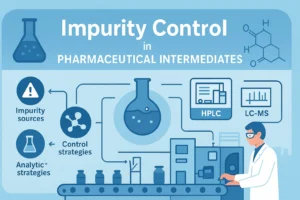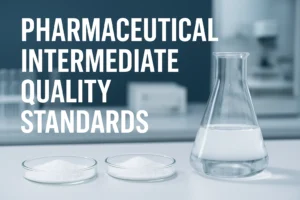In the realm of calcium channel blockers, Verapamil and Diltiazem stand as twin pillars of cardiovascular therapy, yet their pharmacological profiles, clinical applications, and market trajectories diverge significantly.
For manufacturers of active pharmaceutical ingredients (APIs) and intermediates, understanding these distinctions is crucial for strategic positioning. Let’s break down the differences between the two.
| | | |
Cas | 88150-42-9 | 21829-25-4 |
Molecular formula | C20H25ClN2O5 | C17H18N2O6 |
Molecular weight | 408.88 | 346.33 |
Molecular Origins and Mechanisms: A Family Divided
Both drugs belong to the dihydropyridine class, inhibiting voltage-gated L-type calcium channels in vascular smooth muscle. However, Diltiazem acts as a “short-lived warrior”—its rapid onset and 4-6 hour half-life demand multiple daily doses.
Conversely, Verapamil is the “marathon runner,” boasting a 35-50 hour half-life, enabling once-daily administration. This difference stems from their metabolic fates: Verapamil undergoes rapid hepatic clearance, while Diltiazem’s prolonged elimination hinges on slow liver metabolism and high plasma protein binding (97.5%).
Clinical Performance: Efficacy vs. Safety Trade-offs
Hypertension Control: A 2025 crossover trial in stable angina patients revealed that Diltiazem matched nifedipine’s blood pressure reduction but with a 30% lower incidence of reflex tachycardia—a critical advantage for patients with comorbid heart failure.
Left Ventricular Function: In patients with hypertension and chronic heart failure, Verapamil increased pulse pressure by 12% and prolonged isovolumic relaxation time, signaling potential diastolic dysfunction. Diltiazem, by contrast, preserved cardiac mechanics.
Adverse Events: Verapamil’s side effect profile includes dose-dependent headaches (25% incidence) and flushing, while Diltiazem’s primary concern is peripheral edema (15% vs. 5% for nifedipine).
Market Dynamics:
The global calcium channel blocker market, valued at $12.3 billion in 2024, reflects Diltiazem’s dominance. Its formulation simplicity (single daily dose) and safety profile have propelled it to 65% market share, while Verapamil’s use is confined to niche areas:
Acute Hypertensive Crises: Short-acting Verapamil remains a go-to for emergency departments, though its role is waning due to risks of hypotension.
Pregnancy-Induced Hypertension: Verapamil’s placental transfer rate of 15% makes it safer than labetalol for fetal development.
Manufacturing Implications: Opportunities in Intermediates
For API producers, the shift toward Diltiazem demands agility. Its synthesis involves a three-step process from 2-chlorobenzaldehyde, with the key intermediate 6-methyl-2-(2-aminoethoxymethyl)-4-(2-chlorophenyl)-1,4-dihydropyridine-3,5-dicarboxylic acid dimethyl ester dictating yield and purity. Our facility specializes in this intermediate, offering:
99.5% Purity: Critical for avoiding impurities that trigger adverse reactions.
Scalable Synthesis: From 10 kg pilot batches to 10 MT commercial runs.
Regulatory Compliance: cGMP-certified production with DMF filings for EU/US markets.
Conclusion: The Future Favors Precision
While Verapamil clings to its niche in acute care, Diltiazem’s reign as the chronic therapy standard is secure. Manufacturers must align with this trend—investing in Diltiazem intermediates isn’t just a commercial choice but a commitment to safer, more convenient cardiovascular care.
Ready to Upgrade Your Supply Chain?
Contact us for samples of our Diltiazem intermediate and explore how our process chemistry expertise can streamline your API production. Together, let’s shape the next generation of cardiovascular solutions.



